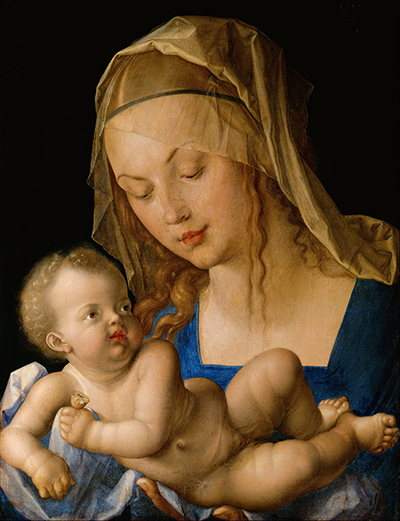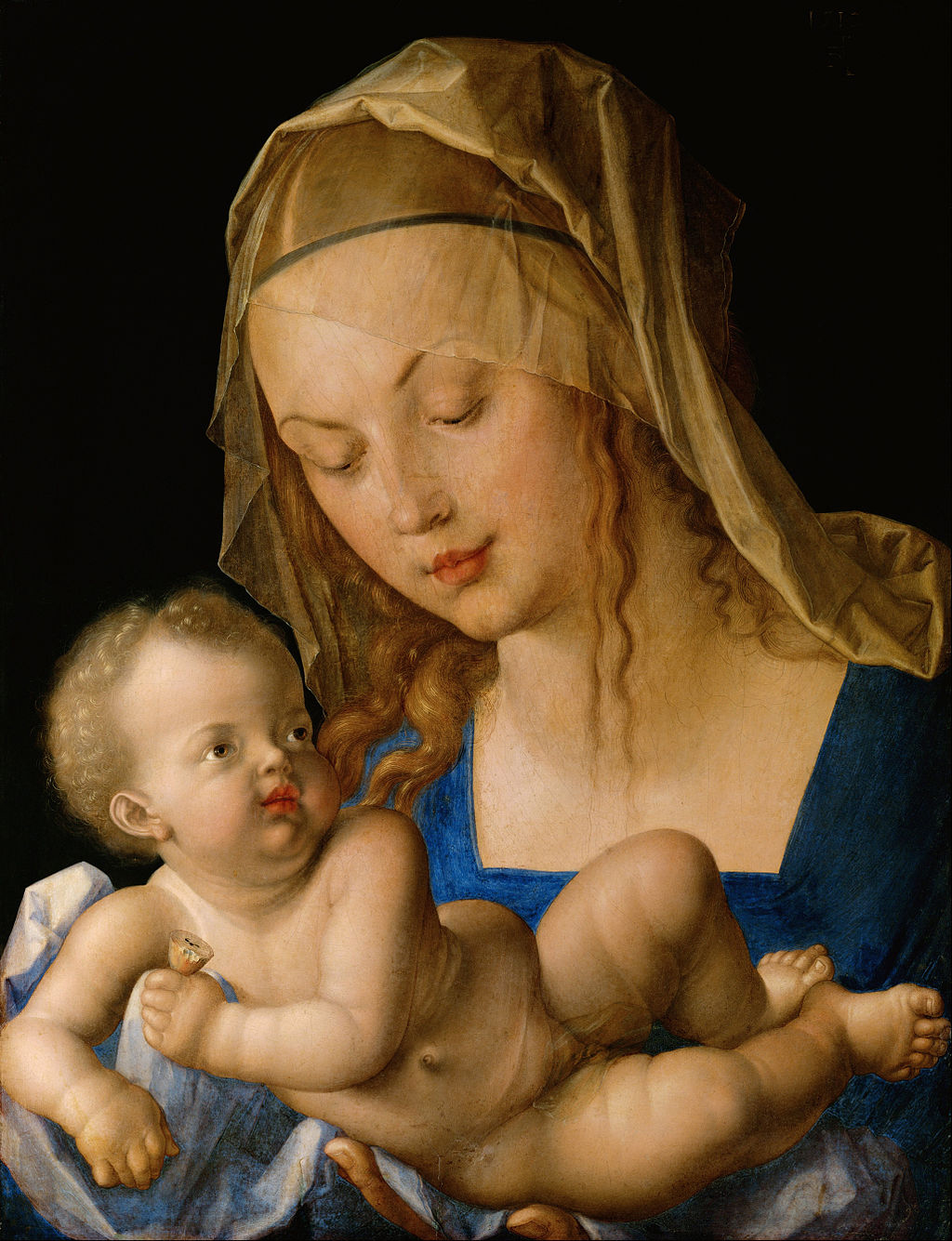Albrecht Durer would feature the Virgin and Child many times during his career, across several different mediums. This particular iteration came about in 1512 using oil on wood and the overall piece is around half a metre in height and width.
This beautifully crafted piece features the Virgin leaning over her child, whilst holding him in a small cloth. She is dressed elegantly in a blue dress with gold coloured headwear. The baby holds a slice of pear which is to symbolise Jesus' love. Some have argued that the gentle nature of this portrait is directly related to Gothic art, whilst the colours are more akin to the Italian Renaissance, of which Durer was particularly familiar. This item can now be found within the collection of the Kunsthistorisches Museum, Vienna and although small in size, the beauty of this image makes it a highly memorable contribution from the famous Nuremburg artist. He would revisit the topic of the Virgin many times over, and would try out various different approaches across that selection of work. Durer is known to have enjoyed this particular theme of work but also, crucially, would have found it to be highly palatable to potential patrons as well, and so it made sense to revisit it many times over.
The artist chooses to place these two iconic figures on a black background which creates a dramatic atmosphere that forces our attention to be entirely on them alone. The artist here is careful to include the small fingers and toes of the baby which remind us of their innocence and vulnerability, whilst the Virgin looks over him with admiration and love, as well as a firm desire to protect. The angle in which she holds the child is almost as if she is presenting him to the viewer, allowing us to connect directly with the theme of this work. Some academics have pointed out how the two figures are depicted in slightly different ways, but as yet have been unable to decide on why the artist would have chosen to do this. As with many paintings from such a long time ago, theories can be put forward and discussed at will, but the chances of actually reaching a confident conclusion are low.
The Kunsthistorisches Museum in Vienna is an extraordinary venue from which to enjoy classical art, with Durer well represented alongside all of the major figures from the Renaissance up to around the late 19th century. It is the sort of collection that will hold your focus for many hours on end and there are also a number of exhibitions for high profile artists held across the year in order to replenish the permanent collection with additional loans for months at a time. Avarice and Adoration of the Trinity are two key works from Durer's career that can be found here and you may also be interested in the likes of The Hunters in the Snow, The Peasant Wedding and The Peasant Dance which all came from the hand of another respected North European artist, Pieter Bruegel. Besides those, there are thousands more items to enjoy within this extensive and high class collection.





